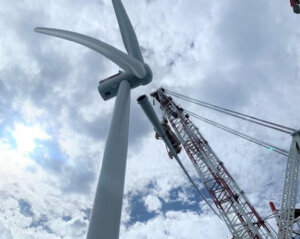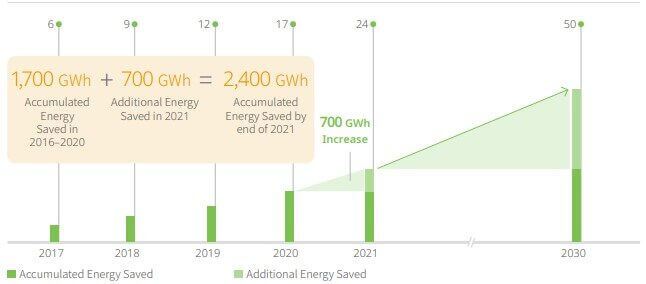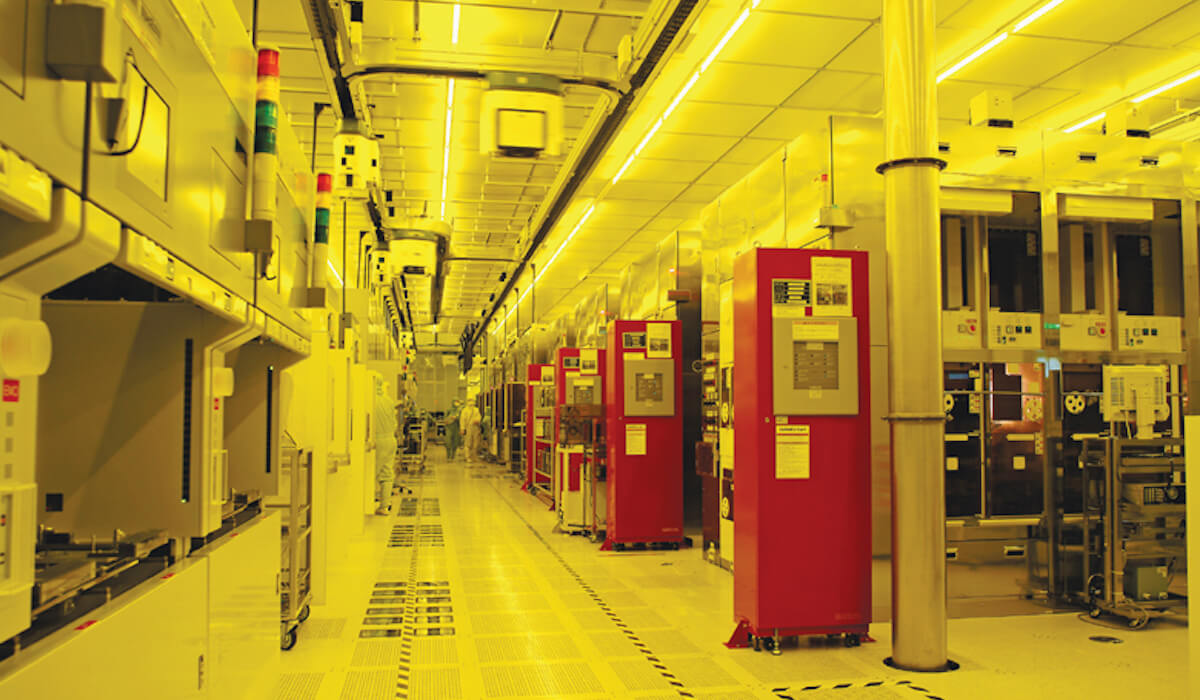Paul Harvey, a news radio personality was famous for his trademark “the other side of the story”. At the close of his newscast each day, he would highlight a news story, or personality, and tell the other side of the story; the one that most of the public was not familiar with. These were always eye-opening and made you consider if what you perceived on the surface at first was in fact reality, as the story typically had an ending that you wouldn’t expect. Let us explore TSMCs Chip In the story below and hopefully look at it’s other side.
On Earth Day 2023, three non-government organizations Green Peace, 350 Asia, and STAND.earth fired a proverbial shot across the bow of TSMC’s perceived lack of progress on the net zero fronts. The fancy social media post, “TSMC, it’s time to Chip In”, was broken up into four segments:
- TSMCs Say-Do Gap
- TSMC is a Laggard, not a Leader
- TSMC Customers in Jeopardy
- How TSMC can Chip In
The primary complaint is that TSMC is not doing enough to get to net zero and that TSMC should work harder to increase the amount of renewable power they use in manufacturing. Greenpeace also showed up at TSMC’s shareholder meeting to protest.
Sound Bites of the TSMC Chip In Complaint:
- Giant chipmaker TSMC made big climate promises.
But it’s falling far short and becoming a major roadblock to preventing the climate disaster. - TSMC’s climate promise, as mentioned by H. Liaw, Vice President, Operations/Fab Operations II: “TSMC is resolute in maintaining our commitment to strengthening environmental protection.”
- Despite its promises and being the first semiconductor company to join RE100, TSMC is now lagging behind its own customers and major competitors.
- Energy guzzler TSMC is the second-hungriest tech power consumer globally.
TSMC’s massive emissions output is growing fast. Between 2019 and 2021, emissions increased by 17.5%, with a peak estimated in 2025.
According to Bloomberg, TSMC’s electricity consumption is projected to consume over 12% of Taiwan’s energy. Yet renewable energy makes up only 9% of TSMC’spower consumption.
According to a report by Greenpeace and STAND.earth: “All consumer electronics brands, including their suppliers, must achieve 100% renewable energy by 2030.”
- TSMC is the global leader in the semiconductor foundry market. Yet it is falling behind on climate action compared to its competitor.
- TSMC is a major roadblock preventing tech companies including Apple from reaching their net-zero promises.
- TSMC customers have made more ambitious climate promises Here are some examples:
- Amazon Net Zero 1,2,3 by 2040
- Apple Carbon Neutral across the supply chain by 2030
- HP net zero across the supply chain by 2040
- Qualcomm net Zero Scope 1,2,3 by 2040
- Nvidia 100% renewable by fiscal 2025.
- Sony Net zero scope 1,2,3 by 2040.
- Worse, TSMC is taking on operational risks to its customers by not acting on Taiwan’s impending energy crisis.
- Taiwan Deputy Economics Minister Tseng Wen-sheng points the finger at the manufacturing sector:“The manufacturing sector should actively invest in the development of renewable energy; there is no reason to hesitate.”
- But TSMC Chairman Mark Liu called on the government to solve the issue: “… I want the government to solve it. It is too late to have enough electricity next year, but we need to care about whether there will be enough electricity in five years’ time.
- TSMC admits there is a looming renewable energy hurdle, but plans to commit to only indirect support. TSMC Vice President Lora Ho said: “The renewable energy in Taiwan is not enough, and TSMC has no plan to build renewable energy plants by itself. But I believe that TSMC’s long-term commitment to purchase green power can drive Taiwan’s renewable energy industry…
- TSMC has bought almost all available renewable energy in Taiwan, but it only made up 9.2% of its total power consumption in 2021.
- The NGO gives TSMC a D- in climate commitment and a C- in overall climate score. They give Intel a B+ and a C+ respectively in the same categories.
The NGOs state that to fix the problem, TSMC needs to be 100% renewable by 2030, and TSMC needs to invest more aggressively in renewables. They state that Apple found a way to put solar on houses in Singapore and Japan to power their retail stores and that Google has invested in geothermal in Nevada for their Nevada operations.
If it were only that easy!
The other side of TSMC’s Chip In Story
Where to start?
First, there is no question that TSMC is being very conservative in its net zero numbers. Since the beginning, they have stated they will be net zero by 2050. TSMC has also been criticized more than once for the 2050 net zero target. TSMC has slowly been increasing its goals of implementing renewable energy used in the manufacturing process. If I read their reports correctly initially, they had targeted 25% of renewable energy in fabs by 2030, now they are reporting that they will be using 40% renewables to power fabs by 2030.
At the end of 2021, TSMC was using 9.2% renewable power worldwide. However, they were using 100% renewable power overseas. Note that some of TSMC’s customers are not 100% renewable in AP, and use carbon credits, or buy excess renewables in the United States and Europe to make up for this. As the Chipin report states TSMC uses most of the renewable power in Taiwan. The Chipin report recommends that TSMC be the driver of more renewable projects in Taiwan.
Currently, according to the trade administration, there are 10GW of wind and 20GW of solar scheduled to be installed in Taiwan by 2036. Most of these installations will be installed by independent power producers (IPP). According to the document, the Grid in Taiwan is owned and run by the government-run Taiwan Power Company, and they are the recipient of power produced by the IPP.
While TSMC could invest in some of these independent power projects, it appears that the Government still controls the power supply. So, in principle Mark Lui is correct. “There are certain aspects of renewable power that the government needs to control and promote”. Taiwan has set a net zero target of 2050.

According to a Canary Media article, the projected ramp of Taiwan’s renewable Solar and Wind is very steep. Ramping solar from a projected 6.5GW now to 20GW by 2025. So, in reality, TSMC is keeping in step with the Government and will adopt renewables in Taiwan as they become accessible.
| Type of Power | Timing | GW |
| Off-Shore Wind | 2026-2035 | 10 |
| Solar | 2025 | 20 |
TSMC is not standing still on building its renewable energy supply. On Earth Day 2023, TSMC announced it had signed a joint procurement contract with ARK Power for 20GWh over 20 years. One of the forward-thinking aspects of the agreement is that half the power is to be allocated to suppliers of TSMC. While at the moment, 500GWh a year is a drop in the bucket to the 19000GWh TSMC used in 2021, it’s a start, and more importantly, it gets vendors on board who may not have been looking at renewables before.
A few other TSMC highlights on ESG from their 2021 report:
- Mark Lui, the Chairman of TSMC, actively heads the sustainability efforts
- 16,100 employees responded to the ESG Journey in 2021
- For advanced processes, TSMC is requiring semiconductor equipment companies to reduce tools emissions by 20%
- Energy Conservation/savings has doubled from 1200 GWh in 2019 to 2400 GWh in 2021
- In 2020 TSMC signed at that time the World’s Largest PPA 920MW
- Implemented multiple energy-conserving wafer processing steps to reduce both scope 1 and scope 2 emissions

One last set of statistics to think about. the Chipin article looks at TSMC scope 2 location-based emissions, which grew 25% from 2019-2021. Using location-based emissions put TSMC in the worst possible light, in part because renewable energy is not considered. If you compare Google’s and META’s location base emissions we see 29% and 63% respectively, significantly higher than TSMC’s. If you really want to compare apples to apples, let’s look at energy consumption. TSMC’s energy consumption grows 34% from 2019-2021. Google grows 45% and Meta grows by 83%. So, who is the hungriest consumer of power over the past 3 years?
So that is the other half of the story or at least a good part of it.




















